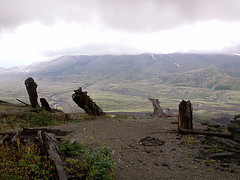OK, so ‘smart’ is a persistently misused word in the modern context (my smartphone isn’t smart; damn thing can’t hold a decent conversation for more than a minute or two), but nonetheless: the northern end of Portugal will, if all goes to plan, play host to a designed and networked ecological city, wired to the gills with sensors and systems to control the consumption of energy and water. Unsurprisingly (and in keeping with the general trends in ecological product marketing) it has a stupid smug pun of a name:
Like other sustainable cities, PlanIT Valley will treat its own water and tap renewable energy. Buildings will also have plant-covered roofs, which will reduce local temperature through evapotranspiration, as well as absorbing rainwater and pollutants.
Yet that is where the similarities with other eco-cities end, according to its makers Living PlanIT based in Paredes. For a start, PlanIT Valley will be built closer to existing transport links than the likes of Masdar. More significantly, its “brain” will use data collected from a network of sensors akin to a nervous system to control the city’s power generation, water and waste treatment (see “Brains and nervous system”). It’s a kind of “urban metabolism”, says Steven Lewis, chief executive of Living PlanIT.
While this network of sensors sounds expensive, the cost of installing it will be offset by using more efficient building techniques.
Rather more utopian and blue-sky than the Cisco city-in-a-box, then, which – one presumes – focusses more closely on the infrastructural bang for the buck required in the rowing economies of Asia than on touchy-feely eco-gubbins; one suspects some sort of mid-point between the two might be an ideal worth aiming for.
While PlanIT Valley is obviously a well-meaning project, the designed city doesn’t have a wonderful history of successes, at least not here in the UK; anyone who has ever visited Milton Keynes will know what I’m trying to say here. As pointed out in the article above, it’s all very well to build a technological marvel of an urban space, but all bets are off until people move in and actually start building a community there… and as even the most casual student of utopias will be aware, it’s usually the people that cause the problems rather than the buildings that house them.
[ Why, yes, I am feeling rather pessimistic today – how did you guess? ]
 In order to keep a close eye on Mount St. Helens,
In order to keep a close eye on Mount St. Helens,